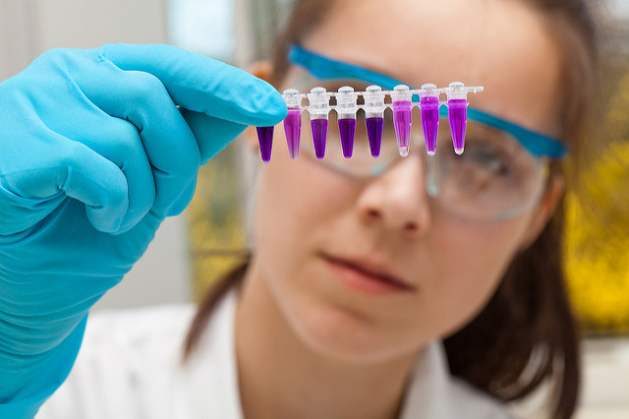Every Girl Cant Be a Scientist Until We Make Big Changes

URBANA, Illinois, Mar 17 (IPS) - Over a month ago, the world celebrated the International Day of Women and Girls in Science. But the celebrations ring hollow when there’s still been no meaningful progress in the representation of women in the research sciences field. At present, less than 30 percent, of scientific researchers worldwide are women, a percentage that has been the same for almost a decade.
Despite this lag in progress, consistently, and predictably so, from the United Nations, to professional societies, to Universities, there is often the message shared that “Every girl can be a scientist”. As a woman scientist, who is very lucky to be in science, because, without luck, and I mean, nature’s luck, I would never been a scientist, I know this statement isn’t true right now.
The truth is, the way our society and systems are set up, few girls, especially girls like me, from rural communities, can ever be scientists. How do we expect them to be scientists without the resources and facilities to allow them to experience the magic of science? How do we expect them to get into science when they do not have societal role model scientists that look like them?
And even if they are lucky like me, how do we expect them to succeed, if many end up in institutions that are still grappling with low representation of women in science? How?
These are the questions I struggle with every time I hear the overly optimistic and unrealistic statements that are not backed up by policies to support them. Moreover, it is also clear that the ongoing pandemic has amplified these challenges.
I am an optimist too and I hope to see – want to see – equal representation of women in the sciences. To get there, though, we must envision and implement big changes.
First and foremost, there is need to avail resources and all necessary infrastructures to introduce girls from all communities, including marginalized communities, to science. This means investing in creating research labs and community science centers and science museums.
These spaces present excellent spaces for young and curious students including girls to interact with science. In the United States, there are several science centers that are doing a great job. From Maryland Science Center to Orlando Science Center to Museum of Science + industry Chicago.
Alternatively, university institutions, research centers and other professional societies can work with organizations present in marginalized communities to provide the platforms for girls and women from marginalized communities to access science at an early age.
The American Association for Advancement of Sciences, for example, has the Science Linkages in the Community Initiative that works with and trains community based partners in an effort to ensure that younger students have hands-on, inquiry based STEM activities. Museum spaces. Such programs should continue.
From firsthand experiences, I know what access to the right infrastructures can have. I still remember my first day at a modern lab at Kenyatta University and how it mesmerized and aroused curiosity in me. Now imagine, if we arise the curiosity for many more girls and at a younger age, then the statistics will change.
Second, once exposed to science at a younger age, girls and women need concerted mentoring, funding and encouragement. The truth is science, like any other career has its good and bad days. Mentoring schemes that continue to support women at the early years, where they are likely to transfer to other non-science disciplines, is necessary.
Mentors have played a critical role in my journey as a scientist-holding my hand, providing support and encouraging me every milestone of my journey. We cannot afford to lose any women through the pipeline.
Third, as they continue to move through the pipeline, and early into the college years, it is important once again that they are supported. Fully paid internships and mentoring programs at these stages are key. At the same time, funding and scholarships are also key, so that they dedicate most of their time while in college in pursuing science without having to work multiple jobs.
Reflecting on my science journey, funding through scholarships and fellowships by universities and numerous organizations including the American Association for University Women and the Schlumberger Faculty for the Future were very instrumental. Without them, I would not have afforded to stay and pursue a career in science.
At the undergraduate level, there also needs to be a clear job pipeline. Career offices and undergraduate studies should provide as many opportunities as possible so that these future scientists are exposed to and discover several pathways to take. At the graduate level, support, mentoring and access to opportunities are also key.
This is extremely crucial as at this point, many make the decision to either stay in science or to finally transition to other careers. Additional resources such as grant writing courses could also go a long way.
Once they make it into science careers, whether in universities, research institutions, or in private and tech companies, it is important to also be supported. Data evidence suggest that women researchers still face so many challenges –from-sexism, workplaces that are not diverse enough, to inflexible work hours to allow women researchers to balance work and family responsibilities.
Therefore, universities and workplaces should put in place policies to correct these issues. Importantly, when policies are instituted, there needs to be well articulated metrics about how they will track success and evaluate whether the policies are working.
Let’s create the right policies and support systems to ensure that many more girls and women pursue and stay in science – then we can truly celebrate.
Dr. Esther Ngumbi is an Assistant Professor at the University of Illinois at Urbana Champaign, and a Senior Food Security Fellow with the Aspen Institute, New Voices.
© Inter Press Service (2021) — All Rights Reserved. Original source: Inter Press Service
 Global Issues
Global Issues